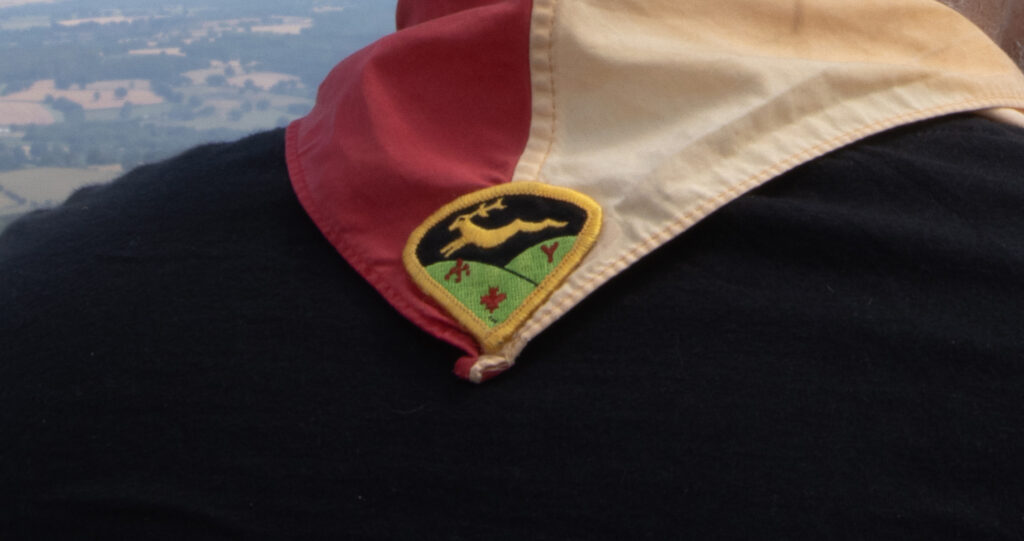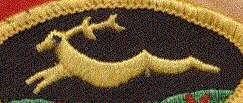
The group badge we wear on the back of our scarves was the result of a design competition held within the group many years ago. It was won by Tom Poulter, a former Cub leader, and his son Jonathan, a Cub at that time.
The badge consists of seven main elements: a leaping deer, a Y symbol, a series of seven dots, a maple leaf, two hill shapes and line drawn from the meeting point of the hills.
Each symbol has the following meaning:

The leaping deer comes from a possible meaning of the village name of Liphook. Liphook is the current name but over the centuries the name has been through various transformations i.e. Leophok (1364), Lepok (1404), Lippuck (1421), Lippocke (1611), Lippock (1675), Lippook (1742), Liphook (1788).
The following is taken from the Old Hampshire Gazetteer. “LIPHOOK, hamlet of Bramshott, now village. Gover suggests on the basis of personal names found in the manorial rolls of Chiltlee that the place had, in the 14th century, the alternative names of ‘Lepe’ and ‘Lepehoc’ = ‘the leap’ and ‘spur at the leap’. If this is right, the ‘leap’ would have been over the headwater of the Wey at or near where the modern A3 crosses it; he takes the ‘leap’ to have been a stream crossing. Ekwall suggests the same elements but translates ‘deer leap enclosure’, citing the Middle English ‘inhoc’ = ‘enclosure’. The detailed interpretation is thus still uncertain.”

The seven dots represent the seven ponds at Waggoners Wells, a local beauty spot.

The Y shape represents the location of Liphook, close to the meeting point of the three counties of Hampshire, Surrey and West Sussex.

The maple leaf symbol shows the relationship between Liphook and the Canadian soldiers based on Bramshott Common during World War 1. Unfortunately 300 soldiers lost their lives due to illness and their graves along with a memorial can be found in the cemetery at Bramshott Church.

The two hills represent the North and South Downs and the line running between them the River Wey, which runs through the village.